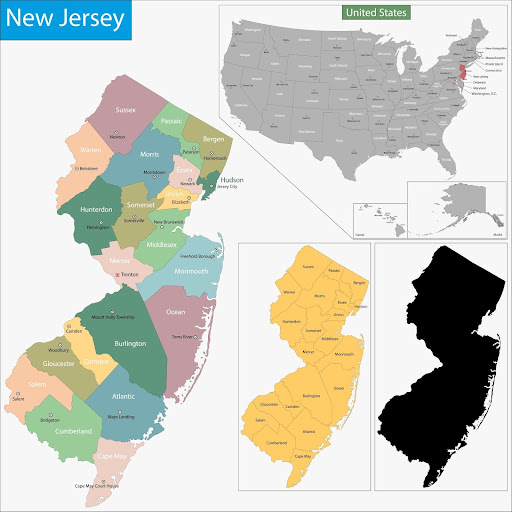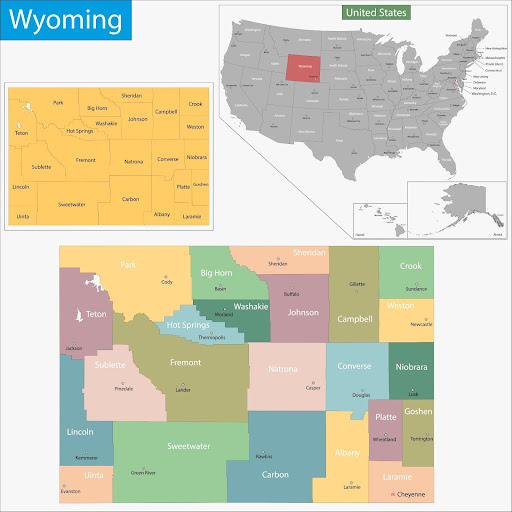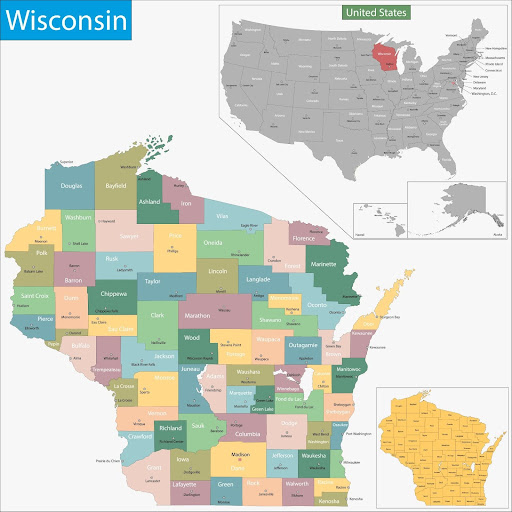Table of Contents
Don’t let the state’s size fool you. New Jersey is home to one of the most fire-prone ecosystems in the country, the New Jersey Pine Barrens. Here, wildfires can crown, spot, and change direction in a matter of minutes. From beachside marshes to oak scrub uplands, ignition types and investigation conditions shift rapidly.
This guide gives fire investigators a complete operational overview of the wildland fire resources in New Jersey, from live incident tracking and state agency roles to training hubs and who to call when the scene’s gone cold but still smoldering.
Working outside New Jersey next? Our wildland fire resources keep you consistent.
Live Incident Updates & Maps
Use this live tool to monitor wildfire activity across the state in real time:
State Overview
New Jersey’s wildland fire behavior is driven by wind, fuel continuity, and rapid ignition, not elevation. The southern half of the state is especially volatile due to dense pine forests and sandy soils that dry quickly and burn hot.
- Pine Barrens (South Jersey): One of the most flammable landscapes in the eastern U.S. Fires here can sustain high rates of spread due to dense underbrush, pitch pine stands, and volatile duff layers.
- Urban Interface Corridors: With nearly 9 million residents and extensive suburban sprawl, the wildland-urban interface is not just growing—it’s embedded. Fires frequently involve fences, sheds, and utility corridors.
- Northern Highlands: Hardwood forests dominate here. Fires tend to be slower but may smolder for days in leaf litter. Investigations are often hampered by rugged terrain and patchy access.
Wildfire Season Timeline
New Jersey’s fire season is short but fierce. It’s strongly influenced by temperature, humidity, and spring winds.
- Spring (March–May): Peak fire season. Leafless trees and dry litter allow solar heating of forest floors. Debris burns and arson spikes are common ignition sources.
- Summer (June–August): Moisture levels typically rise, reducing fire spread. However, droughts and fireworks increase fire starts around the 4th of July.
- Fall (October–November): Secondary fire window with dry air, leaf fall, and gusty conditions. This season often sees small but fast-spreading fires along roads and utility lines.
Key State Agencies Involved
New Jersey has a centralized wildland fire response system anchored by the Department of Environmental Protection (DEP).
Local Wildland Firefighting Resources
New Jersey relies heavily on a tiered system of full-time staff and trained wildland fire wardens. Here’s a look at the local response agencies in New Jersey.
List of Local/State/Federal Fire Response Agencies
- New Jersey Forest Fire Service (NJFFS): Statewide wildland fire suppression and investigation. Operates regionally with trained firewardens. Often leads origin/cause analysis.
- Division of Fire Safety (DFS): Oversees fire code enforcement and training for fire investigators. May assist in mixed-structure/wildland scenes.
- County Fire Marshals: Vary by jurisdiction. Some play an active role in fire cause investigations and local suppression strategy.
- Local Fire Departments: Often first to respond in WUI zones. Provide suppression, scene security, and post-incident interviews.
- U.S. Fish and Wildlife Service: Manages national wildlife refuges like Edwin B. Forsythe. Fire investigations follow federal policy when on FWS land.
Contact Numbers and Emergency Links
- To Report a Wildfire: Dial 911
- NJ Forest Fire Service Headquarters: (609) 292-2977
- Regional Firewarden Dispatch: See regional numbers on NJFFS website
- NJ OEM Wildfire Response: https://ready.nj.gov
- DEP Alerts: https://www.nj.gov/dep/parksandforests/fire/
Training & Volunteering
New Jersey’s wildland fire training system is built around NJFFS’s centralized instruction and NWCG compliance. Volunteer integration is high.
NWCG-Approved Academies and Centers
Volunteer and Seasonal Training Opportunities
- NJFFS Seasonal Firefighter Program: Each spring, NJFFS trains and deploys seasonal firefighters across the state. Many are assigned to suppression crews or used in mop-up and patrol tasks that assist post-incident investigation.
- Volunteer Wildland Fire Program: Offers opportunities to train alongside state crews, receive PPE and radio gear, and deploy during periods of high fire danger. Volunteers may support initial attack or prescribed burns.
- Community Wildfire Risk Reduction Projects: NJFFS partners with local communities for fuels mitigation and firewise landscaping. Volunteers may also assist with public outreach, which sometimes leads to fire cause intel.
Stay Informed on New Jersey’s Wildland Fire Landscape
New Jersey doesn’t get the media attention of the West, but when it burns, it burns fast. Investigators must be prepared to track fires through tight pine corridors, interpret rapidly shifting wind data, and navigate a jurisdictional patchwork that includes state, local, and sometimes federal land, all within a few miles.
Your advantage isn’t just knowing where to dig for evidence. It’s knowing who to call, what fuels you’re standing on, and how the next 12 hours of weather will shape your case.
FAQs
How do I report a wildfire in New Jersey?
Dial 911. For non-emergencies, contact the NJ Forest Fire Service at (609) 292-2977.
Can I conduct a controlled burn in New Jersey?
Only with a permit from the NJFFS. Burn plans are reviewed case-by-case, and weather conditions must meet strict safety thresholds.
Who investigates wildfires in New Jersey?
The NJ Forest Fire Service leads investigations on state and private land. Structure-involved fires may include the Division of Fire Safety or local fire marshals. Investigations on federal lands are led by the U.S. Fish and Wildlife Service.










